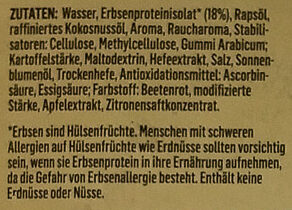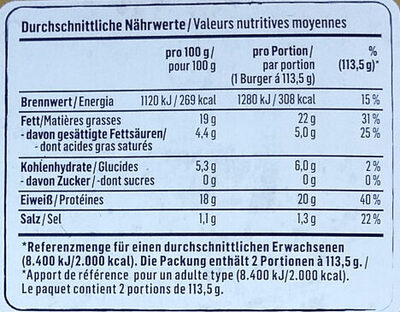Beyond Burger - Beyond Meat - 227 g (2 x 113,5 g)
This product page is not complete. You can help to complete it by editing it and adding more data from the photos we have, or by taking more photos using the app for Android or iPhone/iPad. Thank you!
×
Barcode: 0850004207062 (EAN / EAN-13) 850004207062 (UPC / UPC-A)
Common name: Vegane Burger auf Erbsenproteinbasis
Quantity: 227 g (2 x 113,5 g)
Brands: Beyond Meat
Categories: Plant-based foods and beverages, Plant-based foods, Meat alternatives, Meat analogues
Labels, certifications, awards: No gluten, Vegetarian, Vegan, No soy, NZ Vegetarian Society
Countries where sold: Germany, Switzerland
Matching with your preferences
Report a problem
Data sources
Product added on by kiliweb
Last edit of product page on by frutaner.
Product page also edited by danielw, date-limite-app, grumpf, hard-zero1, jvt, kiwikern, moon-rabbit, onehungryboi, openfoodfacts-contributors, packbot, roboto-app, twoflower, yuka.VFBzdU43ZzVuNkJUbS9FbDRrek82dmQ2K3JxMVdEdWFCdklBSWc9PQ.












